Against all odds. Over the years, that’s been a powerful mantra whenever I’ve faced overwhelming obstacles and my own small-minded thinking. Instead of dwelling on the problems that could hold me back, I’d repeat this mantra to remind myself that I’ve overcome the odds before, and I can do it again. This simple maxim has helped me start and maintain my own successful writing business and find inspiring places to live—from a small farm in the North Georgia mountains to a townhouse in the suburbs of Washington D.C., to my rental home in Sebastopol.
These days, that mantra is getting a workout as I explore housing options in Sonoma County, where the median sales price of a home in June, 2015 was $545,000 (up 11% in one year), and a new lease for a one-bedroom apartment, according to the National Association of Realtors, averages $2,287, an increase of more than 30% during the past three years. Two bedroom rentals average $3,100. And that is, if you can find an apartment or house, given the 97.2% occupancy rate of current inventory. One landlord recently shared that an ad he placed on craigslist generated 150 e-mails within a few hours.
To put these prices in perspective, the median household income in Sonoma County is now about $62,000. Using the standard formula of 30% of pre-tax income for rent, these households would be able to pay about $1,550 per month in rent—just two-thirds the average asking price for a one bedroom. And “average household income” factors in many dual income homes. For singles and retirees, $1,550 is a big stretch. Although some County renters have leases that they can afford, when these leases expire, many face sharp increases to the new “market” rents. It is no wonder that I, like thousands of other county residents, now worry that I am being priced out of the County where I love to live.
Another consequence is that moderate income renters who might otherwise want to move or retire to Sonoma County are forced to find housing elsewhere. Meanwhile, purchasing homes is even less attainable for average income buyers. Homes historically have sold for 2.6 times the median household income in any given area. That would mean about $160,000 in Sonoma County, where the average home price has risen to eight times the median income.
The scarcity of adequate housing has begun to draw the attention of city and county governments and the media. That’s a start, but as Pete Golis wrote in the Press Democrat, “there’s been an abundance of talk about doing something about affordable housing but local agencies don’t have much to show for it, save plans to do more talking.” Meanwhile, more and more residents are being pushed out of the county as a new real estate bubble creates even higher and stronger barriers to entering the housing market.
To be sure, this issue is complex—and lacks a clear vocabulary. For the purposes of this article, I’m honoring the established definition of affordable housing as that for homeless, poor, and senior populations, and accessible housing for disabled residents. While there is overlap, I’m writing here about attainable housing for the squeezed working class and middle class. But even these definitions and demographics are misleading, segmenting the problems—and solutions. Instead, we need to look at the housing problem as everyone’s problem. It affects our local economies, the sustainability of our communities, and even the environment.
In addition to ever-increasing prices, other factors that raise the odds against attainable housing include:
- An unlivable minimum wage
- Jobs lost during the Great Recession
- Decreasing real wages (“today’s average hourly wage has just about the same purchasing power as it did in 1979,” Pew Research Center’s FactTank, October 9, 2014)
- Tough government regulations, and a rise in second-home purchases
- Vacation-rental conversions (which decrease community spirit and increase no-votes for school bonds and infrastructure improvements)
That list is enough to make even an optimist feel like giving up.
Which brings to mind a companion phrase to Against all odds—that is, What if? What if we could coexist with inevitable market fluctuations and bolster our communities at the same time? What if we created attainable housing that strengthened our local economies and reduced our carbon footprint? What if city and county governments lowered permit fees and regulations to allow more creative solutions?
Let’s take a closer look at how our neighbors are answering those propositions with creative solutions.
- What if we encouraged the development of sustainable communities that allow people to divide the expense of buying land, share resources, live more ecologically, and support one another?
Cohousing has become a familiar term. From its inception, the mission of cohousing was to create smaller and allegedly more affordable housing through shared facilities and financial burden. But to date, developments such as Two Acre Wood in Sebastopol, Yulupa Cohousing in Santa Rosa, and Frog Song in Cotati are not attainable for many working people or much of the middle class. This year, a 985-square foot, 2-bedroom, 1-bathroom unit in Two Acre Wood listed for $375,000 with association dues of $190/month.
For Murray Lewis and his wife, Pamela Lewis, buying land and/or a house in Sebastopol seems out of reach, even though they have land in the Pacific Northwest they could sell. “But everything costs so much more in Sonoma County,” Lewis says. “We’re interested in cohousing. If the county government could somehow subsidize projects to allow for more affordable cohousing, I would be supportive of that.”
Jay Shafer’s proposed Tiny House Village offers attainable “cohousing for the antisocial,” a tongue-in-cheek tagline that refers to a supportive community with less interaction. On the other end of the communal continuum, Kai Lewis is working on a community development that shares meals, chores, garden produce, and resources such as a large kitchen and washer/dryers and other amenities. (We’ll delve more into this model shortly.)
“People are interested in different degrees of sharing,” says Cassandra Ferrera, a community-focused real estate agent with Green Key Real Estate. “I encourage people to choose their own adventure. Ask yourself what’s right for you at this stage of life.”
Ferrera sees her role as one of service, helping people fulfill their yearning for a place where they belong. “I help people find security through shelter,” she adds.
Ferrera lives on one acre of land near Graton, where she and her two children plus two other households work together to create community and relearn homesteading skills. In other words, she’s living her mission. She sees the current trend toward more community-minded living as the maturation of the communal back-to-the-land movement of the 1970s. “This trend toward community is ancient, part of our recent history, and definitely part of our future. We’re growing toward a greater sophistication in how we do this with an increased awareness of how we live in community successfully.”
BENEFITS: Studies show that housing communities deliver more than neighborliness. Benefits include reduced carbon footprint, lower crime rates, and fewer foreclosures.
In addition, these communities help increase civic engagement, provide greater stability for local shop owners, and increase the tax base for municipalities and the county.
- What if Sonoma County agencies followed the successful model of nearby Novato in relaxing fees and regulations?
Since Prop 13 passed in 1978, most local governments have been strapped for cash as inflation and costs rise but ad valorem property taxes cannot. They need revenue to deliver the services we expect—schools, police, fire, public works parks—and building fees and permits have become an important revenue source. (Fees in Sebastopol, for example, for one house can run as high as $40,000 before construction begins.)
That’s why what happened in Novato in January 2015 was so remarkable. The city council approved a new zoning ordinance that created a new class of Accessory Dwelling Units (ADUs), with dramatically lowered permitting requirements. Called Junior Accessory Dwelling Units (JADUs, aka granny or in-law flats and second units), these units are repurposed spaces already attached to an existing home, such as spare bedrooms and garages that can be converted to rental properties. Other relaxed requirements include no need for additional parking spaces or fire sprinkler systems; sewer fees for JADUs were slashed from $8,990 to $40 for JADUs. The North Marin Water District’s $10,000 water connection fee was also eliminated in April. JADUs still require building permit fees, based on the expected project cost.
How did they accomplish this? The grassroots effort was organized by Lilypad Flexible Housing Initiative. Residents, homeowners, and advocacy groups for housing, housing, sustainability, and seniors, among others, came together at agency meetings to make these changes reality.
Una Hall wants to see this happen in Sonoma County. She is considering a JADU-type conversion in Sebastopol, but red tape, high fees, and NIMBYs (Not In My BackYard) have stood in her way. “What’s worse for the economy and tourism—having a few units with their garages turned into cute cottages or having people living on the streets?” she asks. “I have a garage I would consider converting to a studio apartment— renting to a retiree or a single mother with a young child—but it’s not feasible. The City of Sebastopol needs to cut some of the permit fees and regulations for a small project like mine. Some people say this will bring down the quality of our schools or neighborhoods, but that’s just not true. More equitable communities pull people up; they don’t pull anything down.”
In most municipalities, second units can be no larger than 840 square feet or 1,000 square feet if part of the Affordable Housing program for low-income residents. Scroll through the lengthy list of requirements at these jurisdictions:
Sonoma County: http://www.sonoma-county.org/prmd/housing/sus.pdf
Sebastopol: http://ci.sebastopol.ca.us/sites/default/files/jatkinson/what_you_need_to_know_about_second_units.pdf
Santa Rosa: http://ci.santa-rosa.ca.us/doclib/Documents/CDB_Second_Dwelling_Unit.pdf
BENEFITS: Repurposed garages, shared housing, and second units within existing municipalities can help reduce waste, traffic, and energy consumption—and foster increased use of public transportation. In addition, while the county and cities may lose some revenue from lowered fees, overall revenue collection rises when barriers are lowered and more people build much-needed housing that creates a more stable community.
3. What if we had a new model for mobile home parks?
Mobile home parks have been around for more than 60 years, but not much has changed over that time. And new parks haven’t been built in Sonoma County for decades. But that’s about to change. Jay Shafer’s Tiny House Village has been getting a lot of media attention for its innovative and appealing design—and zoning. Because these small houses are designed with wheels, this village can be zoned as a RV park, and that means the homes are taxed as personal property rather than real estate. The high-density design (16-22 houses per acre) helps defray the exorbitant cost of land in Sonoma County—and yet, allows for both “company and solitude,” as Shafer puts it. In other words, he wants to enjoy the fact that he lives in a community with neighbors who have his back but also the quiet time he needs. Originally slated to open in 2015, the village has been postponed, as he explains in his blog: “My plans for a village had to be put on hold for a couple years due to unforeseen personal circumstances … I can’t make any promises, but I’m still hoping that, in spite of all my unexpected delays, we can still break ground before year’s end.”
Tiny Houses for a Big Change has a mission to “help end homelessness in Northern Sonoma County with a worker-owned business that trains the under and unemployed to build, live in & sell tiny homes.”
Workers in Sonoma County often cannot find attainable housing near their jobs. Just within the wine industry, for example, approximately 55,000 full-time wine industry workers are mostly living with friends, sleeping in their cars, and/or driving long distances to get to work.
“Single-family homes are not the future,” says Jay Beckwith, CEO at Sonoma Workforce Homes, an employee-owned company that is dedicated to affordable housing advocacy. “We’re in the process of experimenting and evolving a whole new discussion about micro-space living.”
Beckwith, who spent his early years in San Francisco working with the Whole Earth Catalog in the 1970s, sees a parallel with that movement and what’s happening today. “The Whole Earth Catalog and the lifestyle discussion that followed was, in part, responsible for Silicon Valley and other cultural changes,” he explains. “I think we’re now in a similar kind of period. I’m convinced the solution is multifamily, net-zero manufactured homes, and the tiny house movement is helping us toward that goal.”
If tiny homes seem too small for your needs, manufactured homes, such as those designed by Little House on the Trailer based in Petaluma, American Modern Modular based in Marin, and Healthy Buildings in Napa.
Small affordable home interior from Petaluma’s Little House on the Trailer
Homes range from a one bedroom/one bath, 400-sqare-foot home for $49,999 to a two bedroom/two bath, 800 square-foot home starting at $52,800. But again, the question of where to park them creates a barrier. Several new “mobile home” parks could open up attainable housing far more quickly and sustainably than a massive apartment or condo development.
BENEFITS: Economical places (to buy or rent) for people to park attainable housing options such as tiny houses and manufactured homes. Reduced carbon footprint when individuals live closer to downtown services and workers can live closer to jobs. Denser use of land within municipalities to increase sense of community and support of local economy.
4.What if the county made better use of the thousands of acres it owns?
Speaking of tiny homes, the Sonoma County Board of Supervisors recently launched an experiment to create a tiny-home park with 10 homes on county-owned land, similar to Dignity Village in Portland, Oregon. The project is designed to help alleviate the “chronic shortage of shelter for the homeless in the county — a shortfall compounded by the area’s torrid housing market, including skyrocketing rents.” (Press Democrat, July 28, 2015).
Good news, and we need more efforts like this for the homeless and poor. But let’s not forget that one of the best ways to deal with homelessness is to prevent people becoming homeless in the first place and ensuring they can stay in their homes. For working people and many in the middle class, this has grown increasing more difficult since the Great Recession; they’ve become what is now called the “housing insecure.” “Americans are feeling better about their job security and the economy, but most are theoretically only one paycheck away from the street.” (MarketWatch, Jan. 31, 2015)
So, what if the county could offer a similar experiment for other demographics, such as working people and the squeezed middle class? With thousands of acres of undeveloped land owned by the county, this land could become useful and profitable for the county through reasonable rents and/or land taxes.
BENEFITS: Stable populations keep local shops open and thriving. School and infrastructure bonds get passed. Sales taxes and the tax base increase. These improvements cost the county little—but help supervisors and councilmembers deliver the housing solutions they give lip service to.
- What if there was legal help to avoid the inevitable problems that arise with cooperative living?
I know firsthand the problems that can arise in communal living. My back-to-the-land experience in the 1970s got off to a shaky start when legal and permit problems booted me off the land. And truth be known, those of us who’d banded together soon started seeing different goals for our community—things we never discussed during the early “wouldn’t it be great?” phase. I was eventually able to buy a small farm, but that didn’t satisfy my desire to live in a community.
I wish then we’d had a champion like Janelle Orsi, executive director and co-founder of Sustainable Economies Law Center (SELC) based in Oakland. Its mission, as stated on its website: “SELC cultivates a new legal landscape that supports community resilience and grassroots economic empowerment. We provide essential legal tools – education, research, advice, and advocacy – so communities everywhere can develop their own sustainable sources of food, housing, energy, jobs, and other vital aspects of a thriving community.”
SELC offers an array of services to help individuals and groups navigate this somewhat new, and still counter-culture, approach to housing. Resources include a free and informative PDF booklet Policies for Shareable Cities: A Policy Primer for Urban Leaders; Orsi’s book, Practicing Law in the Sharing Economy: Helping People Build Cooperatives, Social Enterprise, and Local Sustainable Economies, and a variety of newsletters and updates plus membership and volunteer opportunities.
BENEFITS: Access to legal communal arrangements that help avoid problems in the future. Empowerment and information to work with county and cities to exact change in restrictions and rules.
- What if we joined together to take action and foment changes in fees, regulations, and opportunities?
As mentioned earlier, there’s a wide range of communal opportunities, from Cassandra Ferrera’s homestead of two or three families to a larger community such as Tiny Houses Village and Tiny Houses for a Big Change. Another model that’s already attracting a following features approximately 15 houses with a common house and communal garden. In addition, pooled resources and shared tasks keep costs lower (with a barter system for anyone unable to work). The houses may vary in size, from tiny houses to larger houses that include, for example, artists’ studios. Portland’s Tiny House Community, profiled in the video below, is pioneering such a vision.
The community model is a dream of 26-year old Kai Lewis, a Summerfield and UC Santa Cruz grad who is the son of Murray and Pamela Lewis. “The lifestyle I want is a combination of self-sufficiency and community,” he explains. “I like having my own space, but also being part of a close-knit community that shares meals and evenings. But the cost of living in Sonoma County and the amount of money it takes to make something like this happen is beyond my means.”
To that end, Lewis is attracting a group of like-minded folks interested in forming a nonprofit and developing a business plan, an important step that many of these communities skipped in the past. In addition, they want to work together to foment change within county governments. For example, they plan to ask the county for a tax abatement on improvements (though they’d continue to pay taxes on the actual property) and access a county program that offers low-interest loans around 3% to 4% for houses and other improvements.
“We hope the county can help us with the physical space, ideally away from town,” Lewis adds. “We’re looking for the best of both worlds: close neighbors and country living rolled into one.”
BENEFIT: Attainable, collective housing developed faster and more economically and ecologically than commercial developments. Reduced carbon footprint, increased tax base, and improved local economy.
The need for attainable housing in Sonoma County is now. While these small ideas and experiments won’t solve the looming large problem, they are a start. And they illustrate the desire—no, make that need—we all share for having a place to call home. Caverly Whittemore, who lives at Burbank Gardens in Sebastopol, knows he’s fortunate to have such an affordable and attractive place to live. But he wants to see this happen for others. “We can’t keep losing our young people, seniors, and others because the cost of housing is out of control,” he says. “Politicians and county officials need to wake up and create up-to-date regulations and fees. We need to develop communication channels between people who are interested in housing alternatives, functioning together and networking. Like a pearl forming, we need a starting point that people can collect around, online and in person.”
As part of a community effort to discuss housing solutions, a new Facebook page has been formed here called “Solving Sonoma County’s Housing Crisis.” Anyone interested is invited to join, share and express.
Update February 25: An excellent new series launched this week from a great Southern California based public interest journalism website called Capital and Main. They are looking at the statewide affordable housing crisis in a series this week. This story notes that by eliminating the state Redevelopment agency, a $1 billion annual stream of state money to help build affordable housing has disappeared in California, just when rising costs are pushing the economics of affordable housing over the edge.


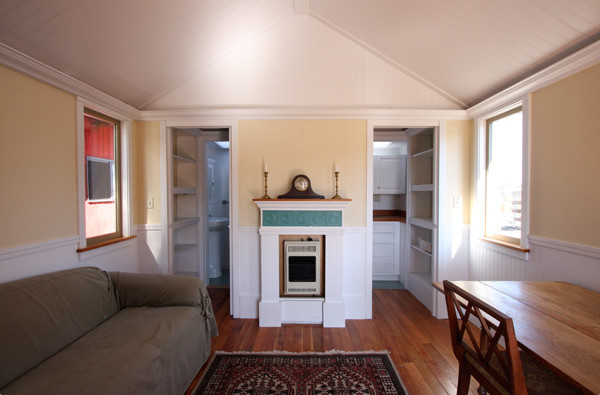




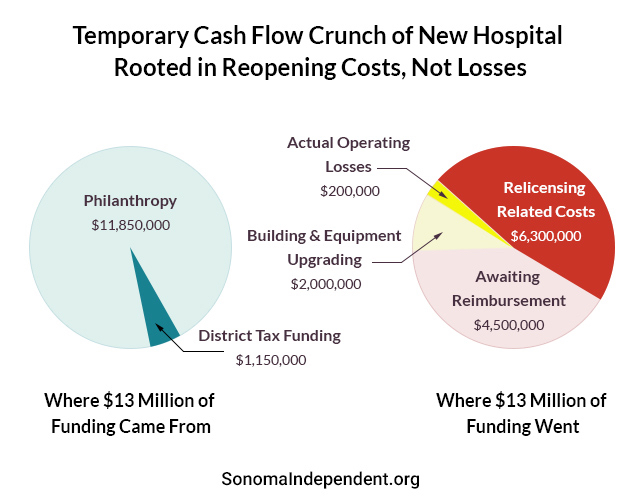























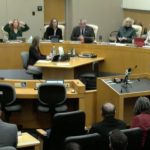
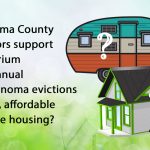
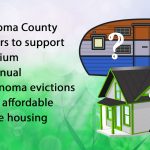
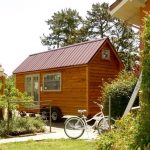

Great ideas!!
Let’s move from reading pixels to rallying public pressure on decision-makers to turn this vision of possibility into reality.
Thanks, Gina. And yes, please keep in touch through our Facebook group to help us create change.
I have been studying sites in Marin and Sonoma counties for the least 4-5 years, looking for a financially viable site for a cohousing project (I’m a development consultant). The biggest obstacles are cost of the land, zoning regulations, and people’s attitudes about density (more than 3 stories – horror!). Density is needed to make a project work yet density is a bad word, even among folks who want sustainability. Density IS the sustainable way to build! Counties need to step up and get more creative in their zoning regulations, design guidelines, and processes to make density housing more attainable.
Thank you for your expert comment, Linda. Density and changes in government regulations are part of the conversation–and action–we want to develop. We hope you will connect with our Facebook group and continue to contribute your expertise.
Linda – Hi! I wonder that, along with density (3 stories!), if expansive areas for communal gardening, even a little private gardening space, community room, child play areas (like Two Acre Woods has) and laundry areas separate from living areas (individual homes/condos) might make the 3 story issue a bit more interesting. It takes more land but it keeps people together and more community minded. I remember when Michael and Alexandra were planning Two Acre Woods and how they really wanted 10 acres to build on but couldn’t find it within the city limits and how upsetting that was. They had to settle for the much smaller piece of property.
What needs to happen, and many people have tried for about 30 years now, is that the County needs to majorly up-date and modernize their land use rules to allow development and building on county private land, not just within city boundaries. Allowing for the development of say a 12 acre parcel with its own large septic system, well, etc. so that more than one home and a granny unit can be built would be key to making a truly vibrant and affordable housing up-date.
Lynda – thanks for the great article.
Thanks, Suzie. Please keep your ideas coming!
Hi Suzi! – Yes, any project I would propose would have as much outdoor space as possible, given the limitations of the site, and common space as it couldn’t be cohousing without it. It’s all about what makes the project financially feasible (ie – how many units are needed). If you can go up, then that allows for more outdoor available space. Parking regulations are another issue that have a negative impact on projects. We studied a site in Fairfax and half the property had to go to parking, limiting any outdoor gardens. We’re currently looking at a property that’s already entitled with a lot of land in Sonoma Co – stay tuned….
Dear Lynda,
Thank you for pointing me in the right direction! I want to be part of the Attainable Housing movement, it’s a necessity for keeping Sonoma County, specifically Sebastopol for me, a vital community! We need more long range thinking going on around here….
Hi Kristin, So glad you accessed the article and found some good resources. We hope you’ll continue to stay in touch. We can make changes happen–especially if our numbers grow. I’m still out of town, but you can access the Facebook link in some of the other comments replies.
Great article, I’m in. What’s next?
Daniel Osmer, Host
Science Buzz & Economics Cafe, Sebastopol, CA
Thanks, Daniel. So glad you’re in! Please join our Facebook group where we hope to build a strong group with creative ideas. See link in the article and other comments below–sorry, I’m out of town at the moment and can’t create the link here. But I wanted to respond and say thanks ASAP. Looking forward to hearing your ideas!
Thank you for the excellent article Lynda. You have opened my eyes to a bigger picture and solutions to this issue that I had not pondered. I was recently given 60 days notice to vacate my house due to it being put on the market. I am one of the lucky ones that was able to find a rental within a reasonable time although not with what I would consider a reasonable rent.
Thanks, Karen, for sharing your situation, which is all too common in our county. As you talk with people in similar situations (or those who are concerned about this issue), I hope you’ll mention our article and our Facebook group. We believe we can make change happen–with enough of us banding together and working toward solutions. Thanks again!